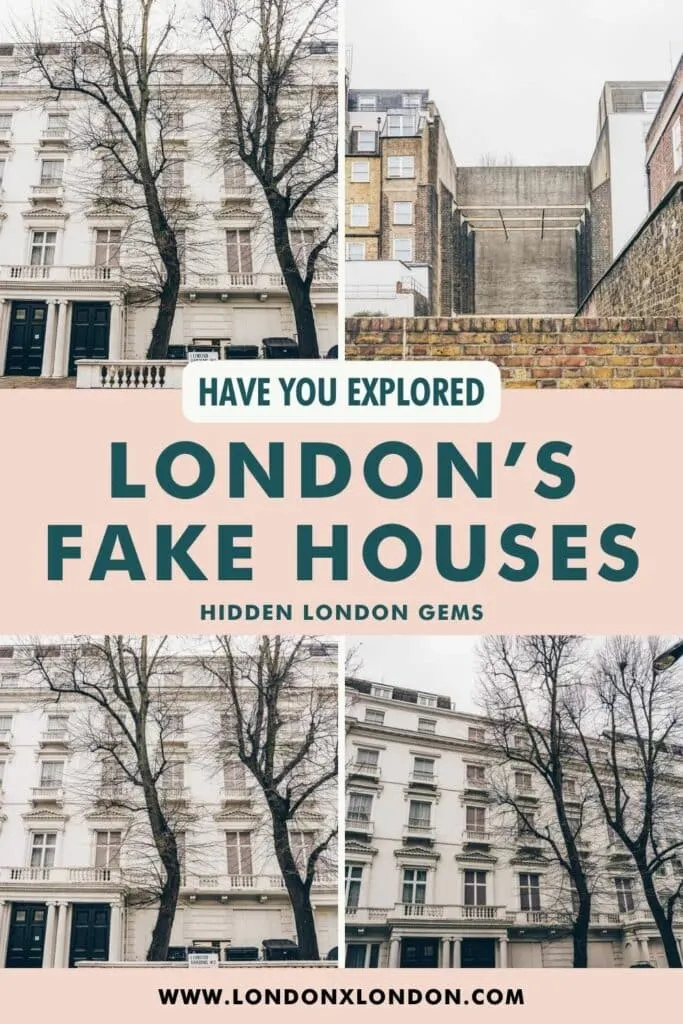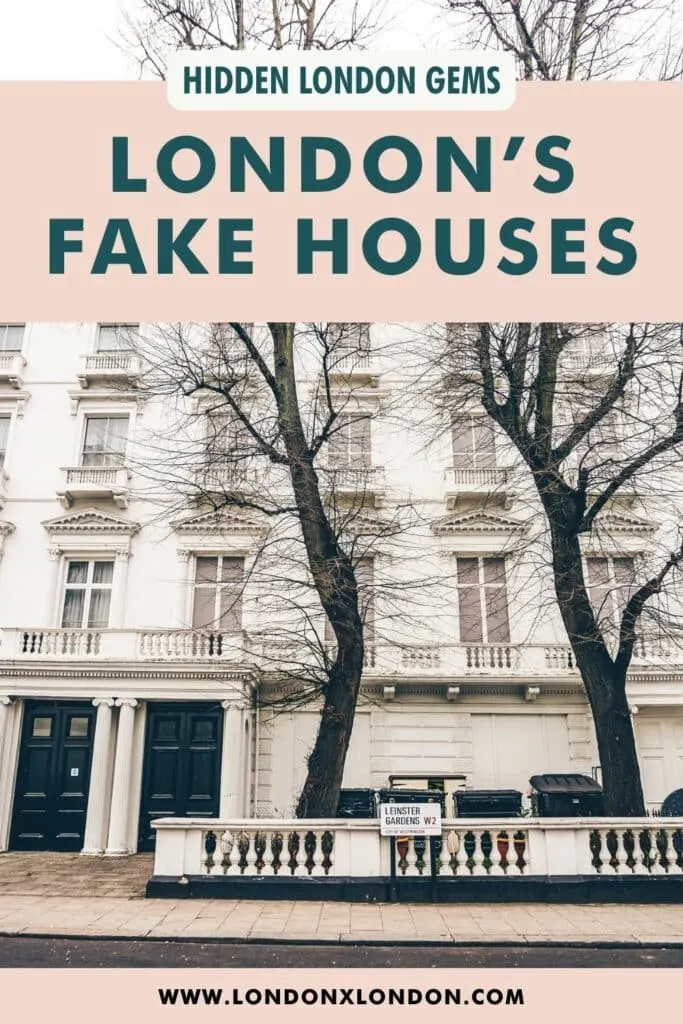The fake houses of Leinster Gardens are testament to the fact that in London, things are not always as they seem.
At first glance there’s nothing particularly special to see as you’re strolling down this quiet road in Bayswater, flanked by stately houses and trees.
It’s only when you look closely at numbers 23 and 24 you notice that something is amiss.
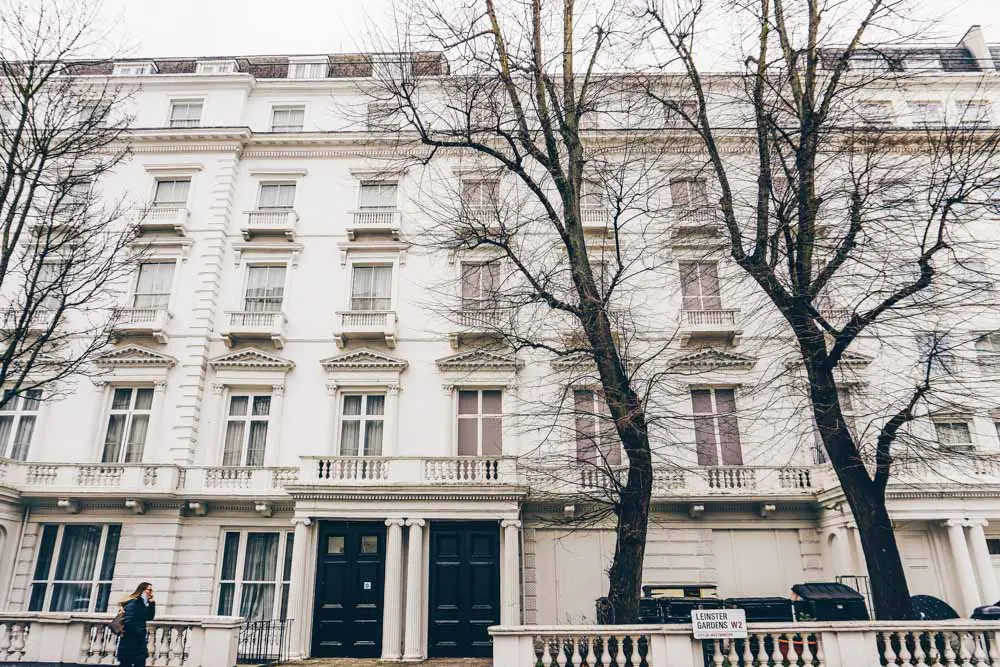
The facades look innocent enough – blandly fading into the melange of terraced balcony-adorned properties. But there’s something too still, too sterile for them to ring true. There are no postboxes, the windows so uniformly grey they can’t be real (they aren’t), the lowest floor a complete blank wall.
Well done – you’ve found the fake houses at 23-24 Leinster Gardens, one of London’s odder spots.
Although they might look like normal houses, they’re just facades – a mere 5ft thick before disappearing to thin air.
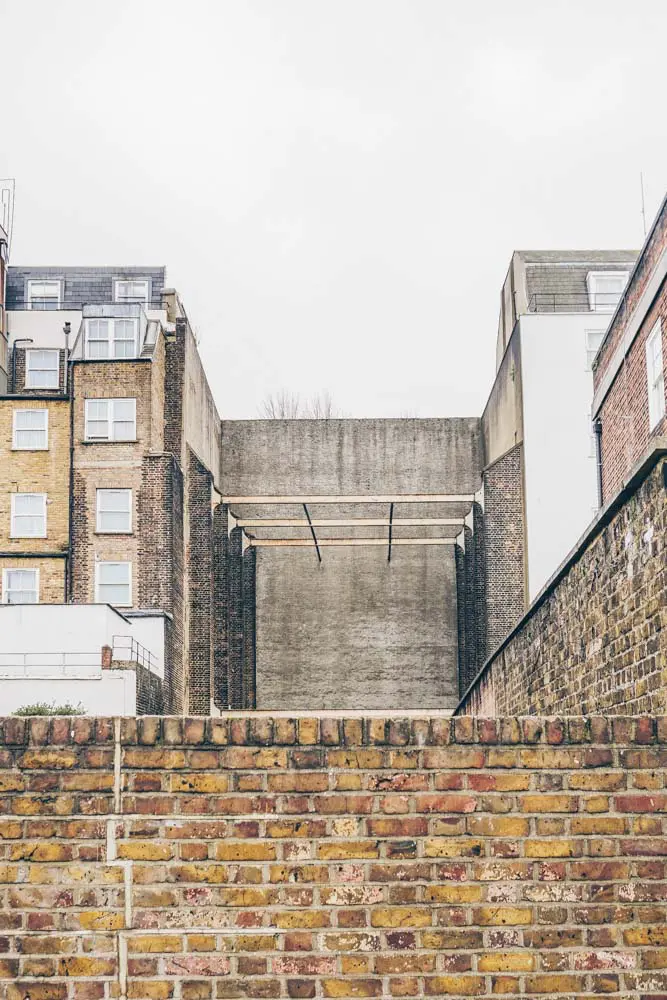
We’d be disappointed if you didn’t have a few questions. We certainly did. Why do they exist? Why do they look familiar? It’s time to discover a little more about the fake houses.
A Peek at the History of the Fake Houses of Leinster Gardens
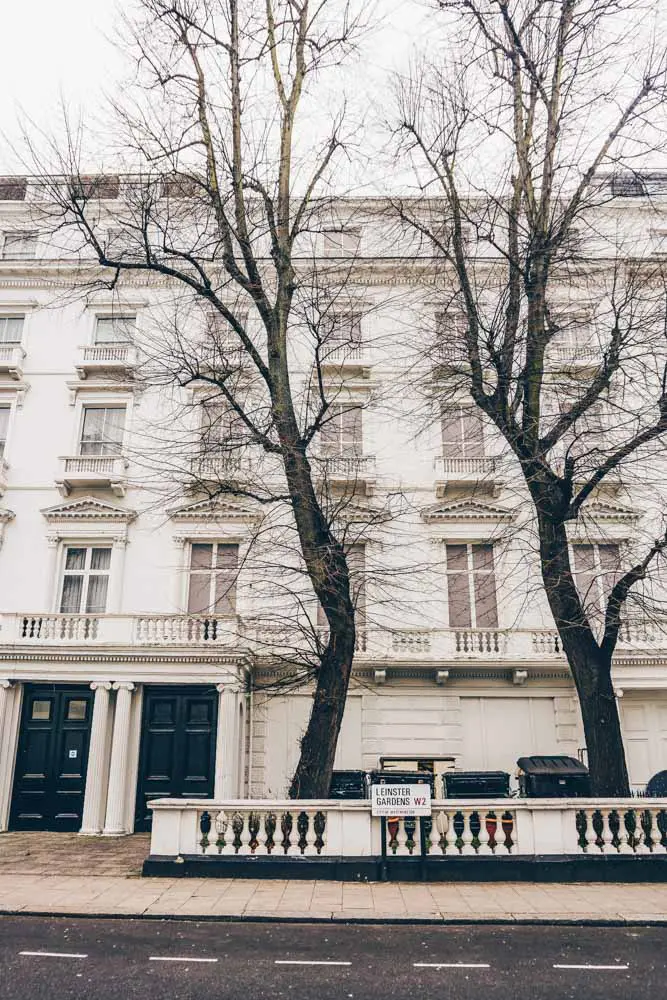
Weird as the houses at 23-24 Leinster Gardens might be, the reasons for their existence are not so baffling.
Throwback to the 1860s, when The Metropolitan Line, the world’s first underground railway was being constructed. Although the first section of the line opened in 1863, its westward extension later in the decade saw it ploughing through the area of Bayswater.
Much of the line was constructed using the cut and cover method – so rather than boring the tunnel underground, the tunnel was dug from above and then covered over.
That process meant the destruction of a lot of buildings including… you guessed it, the residences at 23-24 Leinster Gardens.
Most of the buildings demolished to construct the line were promptly rebuilt – but Leinster Gardens were to be an exception.
Early underground trains were powered by coal and steam and needed to ‘vent off’ the accumulated emissions from the train into the open air at regular intervals.
Rather than rebuilding the houses they’d demolished to construct the railway line, authorities proposed to have the same location as a venting off point – a proposal that was none too popular with the locals.
A compromise was reached: the trains would still vent off behind the houses, but the facades of the demolished houses were rebuilt to keep up appearances… and so the fake houses of Leinster Gardens were born.
Pranks and High Jinx
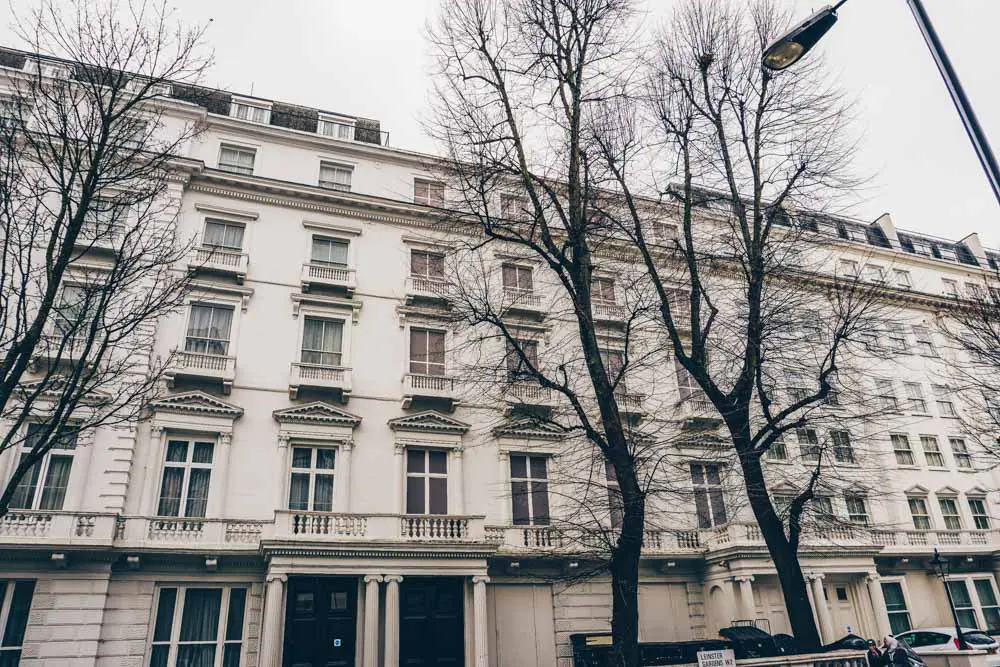
Over the years the houses at 23-24 have been used for a number of pranks and more than a few swindles.
Take, for example, the time in the 1930s when the hoi polloi of society turned up at the houses, having been sold tickets for a charity ball supposedly happening at that address. Safe to say, there was no ball and they didn’t get their money back.
That’s just the tip of the iceberg. Pizzas have been ordered, taxis called out – so much so that the joke is up – both industries having wised up to the true nature of the addresses.
Appearance in Sherlock
Have a niggling feeling that you may have seen the fake houses before? Well, if you’re a Sherlock fan, there’s a pretty good chance that you have.
The houses pop up in the episode His Last Vow when Sherlock Holmes meets up with Mary Watson (nee Morstan) – Watson’s wife and a secret assassin.
It’s a fitting filming location, particularly given that fake houses of a similar kind play a fundamental role in the plot of one of Arthur Conan Doyle’s Sherlock Holmes stories – The Bruce Partington Plans.
Practical Information & Map
Getting There
The nearest stations to Leinster Gardens are Bayswayter and Queensway – it’s roughly a five minute walk from both stations.
We should probably warn you not to visit the Henry VIII Hotel, which actually has the address of 23 Leinster Gardens. It’s a real hotel and not fake, which could get a bit awkward.
Map
Looking for more of London’s hidden gems? Check these out
- Visiting the Temple of Mithras
- Nunhead: Nature Reserve or Creepy Cemetery?
- London’s Memorial to Heroic Acts
Save and Share on Pinterest
